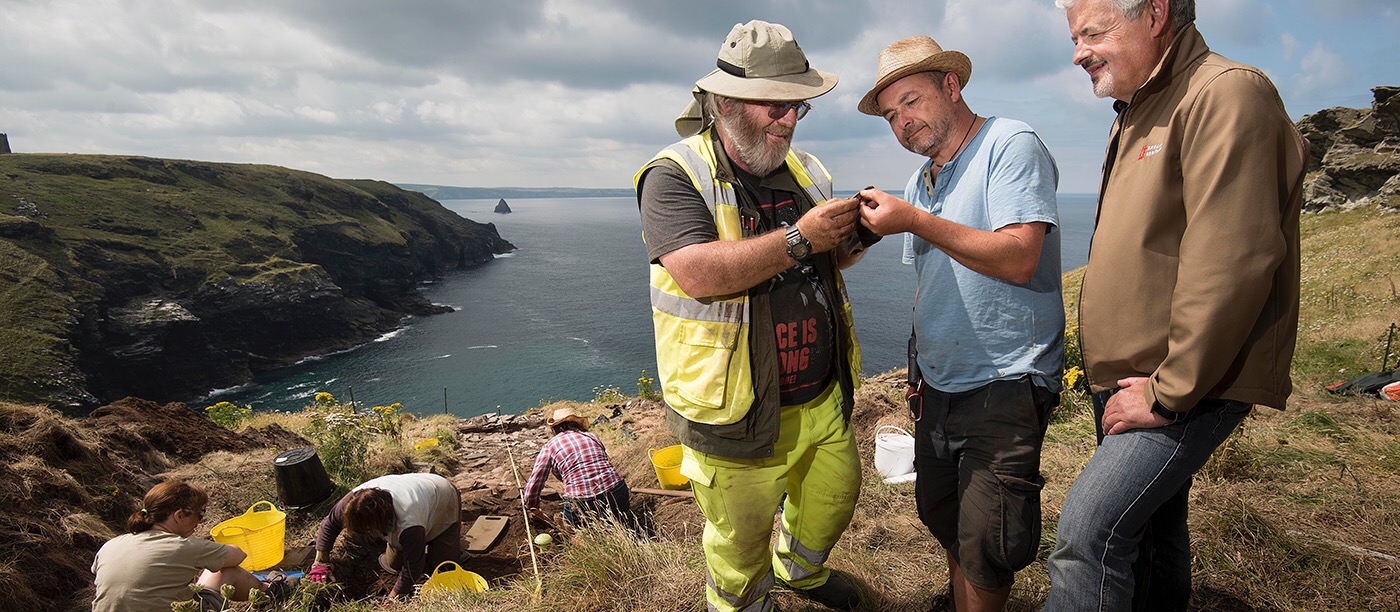An excavation project is underway at Tintagel Castle, aiming to reveal more about life in post-Roman Britain.
Geophysical surveys carried out earlier this year were able to detect the walls and layers of buried buildings built between the 5th and 7th centuries, and the new excavations are shedding light on how and when the buildings were constructed, as well as what they were used for.
Just days into the project, all four trenches (“Tristan” and “Iseult” on the upper eastern terrace, and “Geraint” and “Mark” on the southern terrace) have revealed the first glimpses of the stone walls of buildings.
A metre-wide wall has been discovered cutting across the Mark and Geraint trenches, and the team will be working to establish when it was built. Many interesting artefacts have also been unearthed, including Late-Roman amphorae, fragments of fine glass, and a rim of Phocaean red-slip ware – the first shard of fine tableware to be found on the south side of the island.
Probing of Tintagel’s rich and varied past will continue long after the four trenches are closed, thanks to the use of cutting-edge sample analysis technologies. Soil, ceramics, glass, iron, bone and molluscs from the site will be sent for accurate radiocarbon dating to establish their exact age and help to draw a clearer overall picture of the island’s story.
This summer’s excavations serve as a ‘first look’ beneath the earth – a scratch of the surface and a taster of what may lie in wait. Win Scutt, English Heritage Properties Curator for the West, explains:
“We’re cutting a small window into the site’s history, to guide wider excavations next year. We’ll also be gathering samples for analysis. It’s when these samples are studied in the laboratory that the fun really starts, and we’ll begin to unearth Tintagel’s secrets.”







